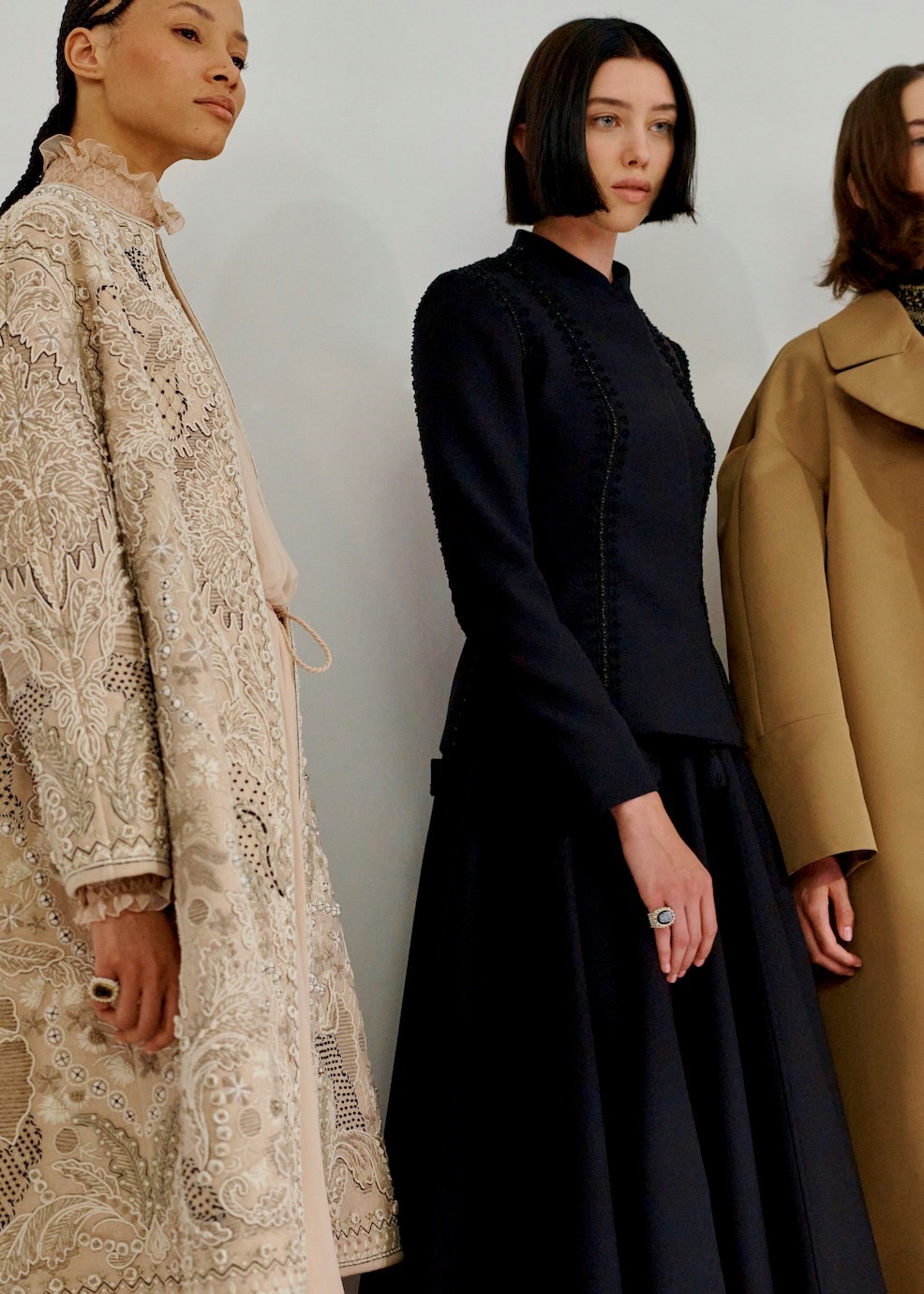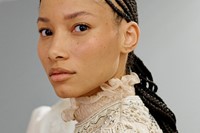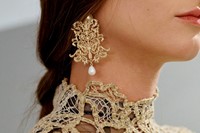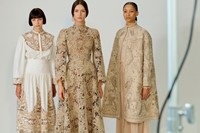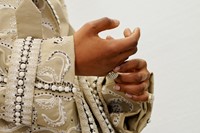When it comes to creation mythology, haute couture has one all its own. And it’s all about craft – the mind-boggling, oft-unbelievable skills and sheer hours necessary to create these clothes which can, sometimes, look unprepossessing but are actually in their making and their wearing, unlike any others. Maria Grazia Chiuri has been inspired by the craft of couture for a number of seasons and, in a sense, it’s a justification for this form of fashion – hand-crafted, one-of-a-kind, in a word, analogue – continuing to exist in an increasingly digitised world.
It wasn’t only on the clothes – an installation created by the Ukrainian artist Olesya Trofymenko, whose work combines oil painting with panels of hand embroidery, blanketed the walls of the show venue at the Musée Rodin. They depicted the tree of life – and as craft is integral to the life of haute couture today, it all made sense. The motif also reflected folk art of multiple countries – so Chiuri drew on different cultures for her inspiration, with a skew towards the full skirts and gently bloused bodices characteristic of folk costume around Europe. Those span the Arlesienne bodices of France’s Provençal regions, the dirndls of the Tyrol, and indeed the dress of Trofymenko’s native Ukraine. Obviously, the latter proves a timely and poignant reflection of our time – just as Christian Dior’s New Look, in 1947, reflected his.
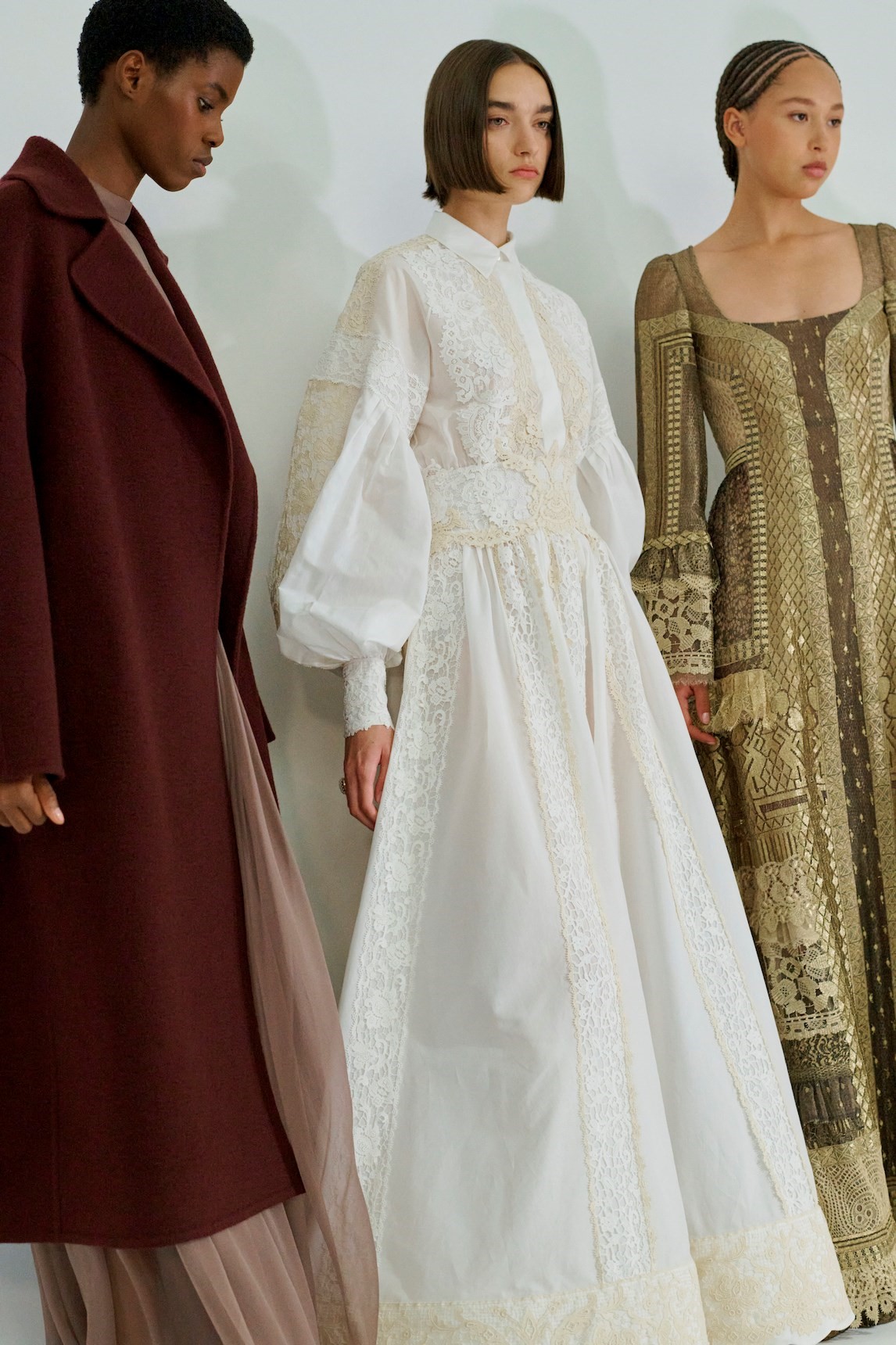
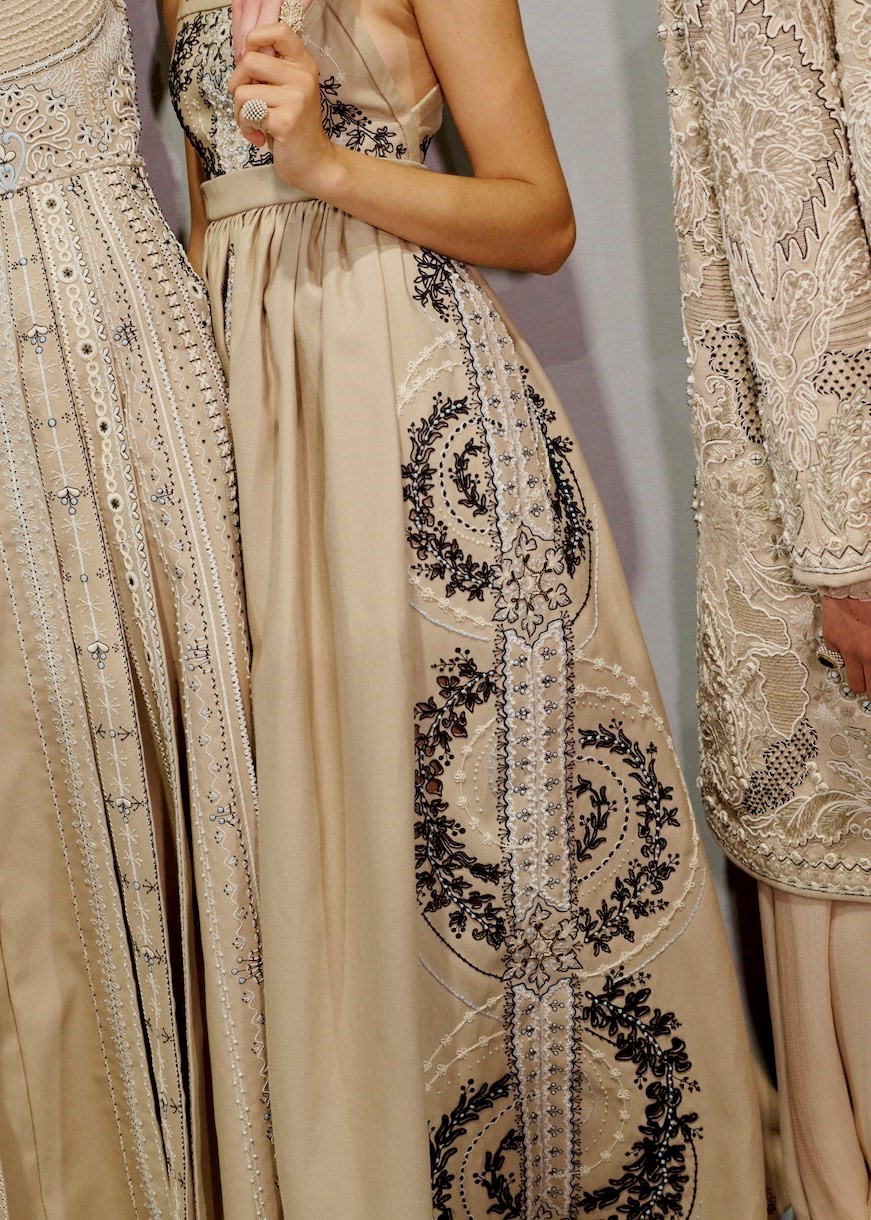
If Monsieur Dior sought to escape to fantasy, however, Chiuri wants to ground her work in reality. Every piece seems real, wearable, couched in the actuality of life today. Which means often that the elements of Dior seem extreme – his vast petticoated skirts, his corset-pinched handspan waists – are translated for a new epoch and a new ethos. Here, the same effects were created with techniques like smocking, compressing and releasing fabric without constraint in an echo of the house’s famous Bar silhouette. And extravaganzas of embroidery are applied, paradoxically, to cottons, wool, cashmere – daytime fabrics, here given the preciosity of a ballgown.
Craft comes in many forms – it’s easy to get wrapped up in embroideries, but Chiuri also explored ideas like hand-looming, creating fabrics without hems, woven to the garment itself, or patchworks – manners of integrating decoration into the construction, so the two are inextricable. And just as a tree has roots, it’s possible to follow these all the way back to the source of the house of Dior, embedded in a glorification of craft and of fashion in a moment of profound difficulty and strife. We can all relate to that – and haute couture, it seems, still has the power to make us dream.
